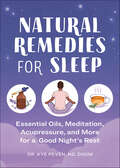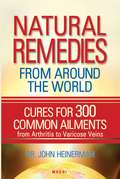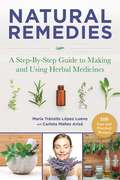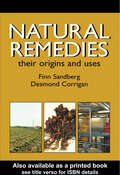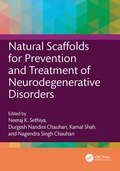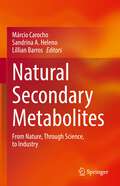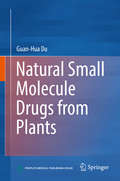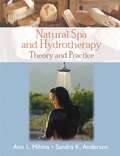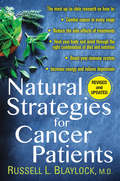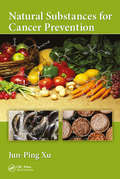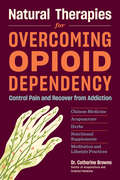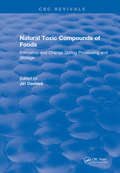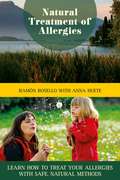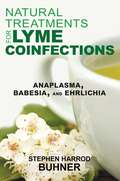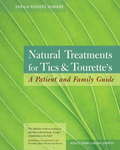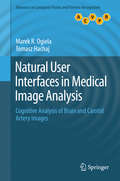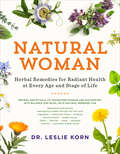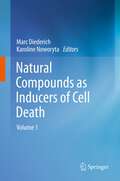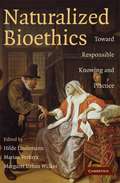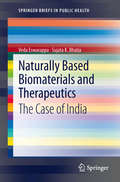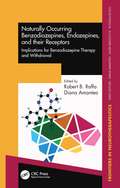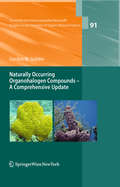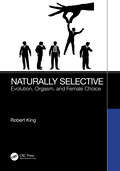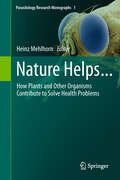- Table View
- List View
Natural Remedies for Sleep: Essential Oils, Meditation, Acupressure, and More for a Good Night's Rest
by Kye PevenDiscover non-pharmaceutical solutions for better sleepA good night's sleep can do wonders for your physical and mental health. But if you struggle with falling or staying asleep, your frustration may have you looking to sleep medicine for help. This natural remedies book will show you a better way. Natural Remedies for Sleep provides the knowledge, tools, and natural solutions for how to sleep smarter. Explore why we sleep, along with cognitive behavioral therapy (CBT) techniques, meditation, essential oils, acupressure, and more to help you get the full, consistent rest you deserve.Sleep 101—Learn the basics of what good sleep is, why we need it, some common sleep issues, and the short- and long-term benefits of a dependable night's sleep.Sleep tool kit—Good sleep takes planning—discover a list of the resources and items you need for getting a better night's sleep, and creating a smart sleep routine for yourself.Sleep scenarios—Find suggested natural sleep remedies for adults and techniques for overcoming a range of sleep problems and scenarios, such as insomnia, interrupted sleep patterns, and digestion issues.Fall asleep and stay asleep with the helpful and all-natural techniques and resources in this empathetic book.
Natural Remedies from Around the World: Cures for 300 Common Ailments
by John HeinermanRenowned medical researcher Dr. John Heinerman has been travelling the world for three decades, searching out the remedies perfected by shamans and healers, doctors and scientists. Now he compiled them all for you in Natural Remedies from Around the World. Arranged alphabetically by ailment for easy access, Natural Remedies from Around the World delivers effective, all-natural medicines grounded in revered healing traditions. Fighting the flu? Try a goat's-milk-and-onion cure that's been felling the flu in Iran for centuries. Indigestion? Have a cup of Brigham Young's Composition Tea, a pick-me-up enjoyed by Mormons since the 1840s. Want to get rid of your "crow's feet"? Try this vinegar trick from Hungary. Troubled by recurring boil or cyst? Discover a fruit cure popular among South Sea Islanders. Asthma? Try a life-saving cure discovered in a remote Turkish village.
Natural Remedies: A Step-By-Step Guide to Making and Using Herbal Medicines
by Mária Tránsito López Luengo Carlota Mañez ArisóDiscover how to grow medicinal plants and create natural remedies right in your own home. Although more and more people use medicinal plants, many are still unaware of those that are usually present in their own homes. For example, did you know that cranberries are effective in treating bladder problems, that olive helps regulate blood pressure, or that hops promote sleep in children? In Natural Remedies, you will find a selection of plants from which you can create natural remedies for every occasion. Learn how to grow and use these medicinal plants, and discover what they can do to boost your family&’s health. More than one hundred types of natural plants are presented in this book, grouped by the conditions that they most effectively treat. You will also discover: Essential remedies to have while travelingThe most useful plants and spices to have in the kitchenThe best plants for respiratory, digestive, tension-related, circulatory, and hepatic concerns With more than 350 color images, Natural Remedies is an essential resource for those looking to grow medicinal plants and create their own natural remedies.
Natural Remedies: Their Origins and Uses
by Desmond Corrigan Finn SandbergThe past two decades have witnessed a phenomenal explosion of interest in the potential uses of plant medicines in healthcare and this has evoked the rebirth of pharmacognosy. This volume is unique in that it is the first, in English, to employ the Anatomical, Therapeutic and Chemical (ATC) classification system, developed by the World Health Organ
Natural Scaffolds for Prevention and Treatment of Neurodegenerative Disorders
by Durgesh Nandini Chauhan Nagendra Singh Chauhan Kamal Shah Neeraj K. SethiyaNeurodegenerative diseases affect millions of people worldwide and are a group of several diseases with distinct pathology, physiology, prevention, and treatment strategies. Recently, natural products especially derived from medicinal plants are gaining momentum to manage neurodegenerative disease safely and effectively. Therefore, there is an urgent need to provide a ready roadmap for scientifically validated value-added nutraceutical and pharmaceutical safe and effective product for the management of various neurodegenerative diseasesNatural Scaffolds for Prevention and Treatment of Neurodegenerative Disorders will provide compiled information stating several identified neurodegenerative diseases including pathology and physiology. From vast literature on natural products, such asscientifically validated plant bioactives, traditional approaches to combat or prevent neurodegenerative conditions are also included along with molecular mechanisms. The book will further specify: Single window complied information on various neurodegenerative diseases. Possible projection of bioactivity from natural resources to each category of neurodegenerative diseases. Ready-to-use reference material to develop several value-added products or proceed to the next level. The book will be very useful for nutraceutical research groups, education institutions, and industries focusing on developing value-added solutions for the management of several neurodegenerative diseases.
Natural Secondary Metabolites: From Nature, Through Science, to Industry
by Lillian Barros Márcio Carocho Sandrina A. HelenoThis book focuses on the different compounds (polyphenols, sterols, alkaloids terpenes) that arise from the secondary metabolism of plants and fungi and their importance for research and industry. These compounds have been the backbone and inspiration of various industries like the food, pharmaceutical and others to produce synthetic counterparts. Furthermore, many of these compounds are still widely used to carry out specific functions in all these industries. This book offers a compilation of different texts from world leading scientists in the areas of chemistry, biochemistry, plant science, biotechnology which compile information on each group of secondary metabolism compounds, and their most important applications in the food, pharmaceutical, cosmetic and textile industry. By showcasing the best uses of these compounds, the chemistry behind their production in plants and fungi, this book is a valuable resource and a "go to" artifact for various audiences. The new approach this book offers, by linking research and the application of these compounds, makes it interesting as an inspiration for new research or as a hallmark of what has been done in the secondary metabolism of plants and fungi in recent years. Although this book may be technical, it is also enjoyable as an integral reading experience due to a structured and integrated flow, from the origins of secondary metabolism in organisms, to the discovery of their effects, their high intensity research in recent years and translation into various industries. Beyond learning more on their chemistry, synthesis, metabolic pathway, readers will understand their importance to different research and industry.
Natural Small Molecule Drugs from Plants
by Guan-Hua DuThis book discusses 120 types of natural, small-molecule drugs derived from plants. They are grouped into 7 parts according their clinical uses, such as drugs for cardiovascular diseases, for metabolic diseases, for neuropsychiatric diseases, for immune-mediated inflammatory diseases, anti-tumor drugs, and drugs for parasites and bacterial infection. Each chapter systematically summarizes one drug, including its physicochemical properties, sources, pharmacological effects and clinical applications. To help readers understand the drug better, the research and pharmacological activity for each drug is also described, which serves as a salutary lesson for future drug development. Written by frontline researchers, teachers and clinicians working in field of pharmacy and pharmacology it provides an overview of natural, small-molecule drugs derived from plants for researchers in the field.
Natural Spa and Hydrotherapy: Theory And Practice
by Sandra Anderson Ann MihinaThe recent growth of the spa industry has resulted in a need for highly educated practitioners of spa and hydrotherapy treatments. Natural Spa and Hydrotherapy: Theory and Practice is designed to meet the needs of today's spa practioners. This book can be used for spa training as well as for skill enhancement for individual therapists. It will assist students of massage and bodywork as well as practitioners in spa settings and private practice who have the desire to increase their knowledge and understanding of, and competency in, natural spa and hydrotherapy.
Natural Strategies for Cancer Patients
by Russell L. BlaylockTHE BEST WAYS TO FIGHT CANCER AND HEAL YOUR BODY NATURALLY This revised, updated edition of Russell L. Blaylock’s revolutionary guide offers the latest cutting-edge information on how and why cancer develops, why conventional treatments fail, and the critical role inflammation plays in all stages of this deadly disease. Using the latest medical discoveries and most authoritative research, Blaylock reveals why essential natural compounds—vitamins, minerals, and phytochemicals—can halt the spread of cancer. With the right combination of diet and nutrition, patients can develop their built-in immune mechanisms to stop the growth of cancer cells and protect their bodies from the debilitating, sometimes lethal effects of chemotherapy. In this new edition, you’ll discover: *The remarkable role plant extracts play in killing and controlling cancer cells, reducing the side effects of treatment, and relieving treatment-related depression, anxiety, and stress *The vitamins, fruits, and over-the-counter special plant extracts that protect the heart and brain against toxic effects of chemotherapy *The powerful mushroom extract that stimulates anti-cancer immune cells selectively *Which commonly used cooking oils can battle cancer and those that stimulate cancer growth and spread *The truth about glutamine/glutamate and cancer *Natural compounds that protect cells, tissues, and organs from radiation damage and improve energy Plus: Why cancer becomes resistant to some therapies • How a ketogenic diet starves cancer cells • How to protect the heart against cardiac toxicity • How Vitamin C promotes the beneficial effects of chemotherapy • How to transform cancer stem cells back into regular stem cells • How flavonoids protect healthy cells • Cancer’s link to diabetes, hypertension, and heart disease . . . and much more!
Natural Substances for Cancer Prevention
by Jun-Ping XuNatural Substances for Cancer Prevention explores in detail how numerous investigations in chemical biology and molecular biology have established strong scientific evidence demonstrating how the properties of naturally occurring bioactive chemicals hamper all stages of cancers (from initiation to metastasis). Accordingly, important goals for cancer prevention are the modification of our dietary habits and an increase in the intake of more anticancer-related natural substances. More significantly, the bioactive chemicals presented in the functional foods should be readily available, inexpensive, non-toxic, and nutritional.
Natural Therapies for Overcoming Opioid Dependency: Control Pain and Recover from Addiction with Chinese Medicine, Acupuncture, Herbs, Nutritional Supplements & Meditation and Lifestyle Practices
by Catherine BrowneWith opioid dependency at epidemic levels, Catherine Browne, a doctor of acupuncture and Oriental medicine, provides an accessible and practical guide to the effective use of natural therapies in helping people wean off opioids, manage withdrawal symptoms, and address pain without opioids. Drawing on her extensive clinical experience, Dr. Browne explains how Chinese medicine, acupuncture and acupressure, herbs, essential oils, nutritional supplements, meditation, and exercise can be used to address addiction and restore the body to optimal functioning. Individuals and families who are struggling with addiction, as well as medical practitioners and holistic healthcare professionals, will find help and encouragement in Dr. Browne’s detailed protocols and advice for integrating natural therapies with traditional medical treatment. This publication conforms to the EPUB Accessibility specification at WCAG 2.0 Level AA.
Natural Toxic Compounds of Foods
by Jiri DavidekThis book summarizes the knowledge of naturally occurring toxic and antinutritive food compounds. It includes those plants and animals of value or potential value for human nutrition, either by direct consumption or indirect. as feed for domestic animals. Also included are toxic and antinutritive compounds formed from food components during processing and storage, as well as the toxic and antinutritive compounds present as natural constituents in raw materials and foodstuffs. FEATURES: Discusses food intolerance-inducing compounds, toxins and toxic compounds; Focuses on the most frequently occurring intolerances; Describes the reaction conditions for the formation of these compounds, as well as for their degradation; Considers nitroso compounds and ethyl carbamate formation.
Natural Treatment of Allergies: Learn How to Treat Your Allergies with Safe, Natural Methods
by Anna Huete Ramón RoselloAllergies complicate the lives of those who suffer from them and pose a difficult challenge for contemporary medicine. Environmental factors, stress, a bad diet, or a sedentary life can be the triggers.An allergy is a disproportionate reaction by the immune system to outside substances that are normally innocuous, such as pollen, dust mites, animal hair, or certain foods or medicines. Natural Treatment of Allergies explains why allergies attack and how to reestablish equilibrium.This book is helpful to those who suffer from asthma, hay fever, dermatitis, or dietary intolerance as a result of strong allergies. It presents the most effective natural therapies that lead to recovery. It also includes: The most reliable tests to determine allergies. Related illnesses: how to prevent and cure them. Food that produces allergies. Conventional treatments and their risks. Alternative therapies: naturopathic medicine, acupuncture, homeopathy, Bach flower remedies, and yoga.
Natural Treatments for Lyme Coinfections: Anaplasma, Babesia, and Ehrlichia
by Stephen Harrod BuhnerA guide to the natural treatment of three coinfections of Lyme disease• Reviews the latest scientific research on Babesia, Ehrlichia, and Anaplasma• Reveals how these three conditions often go undiagnosed, complicate the treatment of Lyme disease, and cause symptoms from headache to seizures• Outlines effective natural treatments with herbs and supplements for specific symptoms and to combat overreactions of the immune system and the inflammation responseHarvard researchers estimate there are nearly 250,000 new Lyme disease infections each year--only 10 percent of which will be accurately diagnosed. One of the largest factors in misdiagnosis of Lyme is the presence of other tick-borne infections, which mask or aggravate the symptoms of Lyme disease as well as complicate treatment. Three newly emergent Lyme coinfections are Babesia, Ehrlichia, and Anaplasma. Tens of thousands of people are known to be asymptomatically infected and at least ten percent will become symptomatic this year--with symptoms ranging from chronic headache and arthritis to seizures. Distilling the latest scientific research on Babesia, Ehrlichia, Anaplasma, and Lyme disease, Stephen Buhner examines the complex synergy between these infections and reveals how they can go undiagnosed or resurface after antibiotic treatment. He explains how these organisms create cytokine cascades in the body--essentially sending the immune system into an overblown, uncontrolled inflammatory response in much the same way rheumatoid arthritis or cancer can. Providing an in-depth guide for those suffering from Babesia, Ehrlichia, or Anaplasma infection as well as for clinicians who work with those infected by these organisms, Buhner details effective natural holistic methods centered on herbs and supplements, such as Ashwaganda and Chinese Skullcap, and reveals how to treat specific symptoms, interrupt the cytokine cascades, reduce inflammation, and bring the immune system back into balance. He explains how these natural methods not only complement conventional Lyme disease treatments involving antibiotics and other pharmaceuticals but also provide relief when other forms of treatment have failed.
Natural Treatments for Tics and Tourette's
by Sheila J. RogersThis welcome guide explains how to treat tics and Tourette's syndrome using natural and alternative therapies, from nutritional therapy, behavioral and counseling therapies, EEG biofeedback, and homeopathy to bodywork, energy medicine, and Chinese medicine. Author Sheila Rogers discusses categories of tics including spasmodic facial movements, eye blinking, mild sounds, and humming. She persuasively counters the medical establishment's standard claim that such disorders are "mysterious" and based in genetics. The dramatic spike in cases, she argues, belies this explanation. Natural Treatments for Tics and Tourette's takes a closer look at the environmental factors and underlying physical imbalances that trigger these conditions' symptoms. In this second edition to Tics and Tourette's: Breakthrough Discoveries in NaturalTreatments, Rogers offers a detailed natural treatment plan. No more will patients have to rely on traditional, drug-based treatments that often carry multiple side effects. In eight sections, the book offers advice from medical experts, the latest reports in medical research, a checklist of common tic triggers, inspirational stories from families who have successfully conquered tics and Tourette's, and practical worksheets for readers to use in their treatment and research. Each of the 23 chapters includes a place for notes and "Takeaway Tips" summarizing key points.From the Trade Paperback edition.
Natural Treatments for Tics and Tourette's
by Sheila Rogers DemareThis welcome guide explains how to treat tics and Tourette's syndrome using natural and alternative therapies, from nutritional therapy, behavioral and counseling therapies, EEG biofeedback, and homeopathy to bodywork, energy medicine, and Chinese medicine. Author Sheila Rogers discusses categories of tics including spasmodic facial movements, eye blinking, mild sounds, and humming. She persuasively counters the medical establishment's standard claim that such disorders are "mysterious" and based in genetics. The dramatic spike in cases, she argues, belies this explanation. Natural Treatments for Tics and Tourette's takes a closer look at the environmental factors and underlying physical imbalances that trigger these conditions' symptoms. In this second edition to Tics and Tourette's: Breakthrough Discoveries in NaturalTreatments, Rogers offers a detailed natural treatment plan. No more will patients have to rely on traditional, drug-based treatments that often carry multiple side effects. In eight sections, the book offers advice from medical experts, the latest reports in medical research, a checklist of common tic triggers, inspirational stories from families who have successfully conquered tics and Tourette's, and practical worksheets for readers to use in their treatment and research. Each of the 23 chapters includes a place for notes and "Takeaway Tips" summarizing key points.From the Trade Paperback edition.
Natural User Interfaces in Medical Image Analysis
by Marek R. Ogiela Tomasz HachajThis unique text/reference highlights a selection of practical applications of advanced image analysis methods for medical images. The book covers the complete methodology for processing, analysing and interpreting diagnostic results of sample CT images. The text also presents significant problems related to new approaches and paradigms in image understanding and semantic image analysis. To further engage the reader, example source code is provided for the implemented algorithms in the described solutions. Features: describes the most important methods and algorithms used for image analysis; examines the fundamentals of cognitive computer image analysis for computer-aided diagnosis and semantic image description; presents original approaches for the semantic analysis of CT perfusion and CT angiography images of the brain and carotid artery; discusses techniques for creating 3D visualisations of large datasets; reviews natural user interfaces in medical imaging systems, including GDL technology.
Natural Woman: Herbal Remedies for Radiant Health at Every Age and Stage of Life
by Leslie KornAn herbal guide to support physical, mental, and spiritual health for women and their children at all stages of life--by a healer with over 40 years of experience.Plant medicines are a woman's ally to achieve optimal health; they bring balance and nourishment to daily life and can reduce or eliminate symptoms of physical and emotional distress. They can also provide alternatives to many pharmaceuticals. This go-to herbal sourcebook gives women the tools to thrive throughout their lives, with remedies using common herbs and plants to support a healthy body, mind, and spirit. Dr. Leslie Korn brings over forty years of experience in numerous herbal traditions and healing modalities, offering timeless wisdom in this herbal companion that can be shared with friends and passed down in the family for generations. She offers treatments using common and easy-to-obtain herbs to address sleep disorders, menstrual issues, autoimmune conditions, anxiety, headaches and migraines, stomach issues, fertility issues, postpartum recovery, skin ailments, common discomforts that affect children, and much more.Korn also offers herbal guidance for rites of passage, moments of community, psychoactive herbs, and a protocol for end-of-life care, as well as a comprehensive resources section.
Natural compounds as inducers of cell death
by Karoline Noworyta Marc DiederichCancer still remains a most important killer and even though synthetic chemotherapeutic agents are currently used, they are cost-intensive and do not always meet the expectations. In parallel, there is increasing evidence for the potential of nature-derived compounds on the inhibition of different steps of cancer initiation, promotion and progression. We believe that all diseases can be found in Nature but that Nature also provides the efficient cures as said the Prophet of Allah: "Allah did not create any illness without also creating the remedy". The content of this book gives a multi-disciplinary approach into the anti-cancer research field related to natural products and dietary compounds. Mainly, it covers the area of antitumor activity through an in-depth description of the cytotoxic, anti-inflammatory and anti-oxidant properties in cancer, inflammatory and cardio-vascular diseases. The cell death inducing mechanisms (apoptosis, anti-proliferative activity, angiogenesis, cell cycle control, cytostatic property and autophagy) give an overview of how natural products are able to target cancer cells. We believe that all diseases can be found in Nature but that Nature also provides the efficient cures as said the Prophet of Allah: "Allah did not create any illness without also creating the remedy". The content of this book gives a multi-disciplinary approach into the anti-cancer research field related to natural products and dietary compounds. Mainly, it covers the area of antitumor activity through an in-depth description of the cytotoxic, anti-inflammatory and anti-oxidant properties in cancer, inflammatory and cardio-vascular diseases. The cell death inducing mechanisms (apoptosis, anti-proliferative activity, angiogenesis, cell cycle control, cytostatic property and autophagy) give an overview of how natural products are able to target cancer cells.
Naturalized Bioethics: Toward Responsible Knowing and Practice
by Hilde Lindemann Marian Verkerk Margaret Urban WalkerNaturalized Bioethics represents a revolutionary change in how health care ethics is practiced. It calls for bioethicists to give up their dependence on utilitarianism and other ideal moral theories and instead to move toward a self-reflexive, socially inquisitive, politically critical, and inclusive ethics. Wary of idealizations that bypass social realities, the naturalism in ethics that is developed in this volume is empirically nourished and acutely aware that ethical theory is the practice of particular people in particular times, places, cultures, and professional environments. The essays in this collection examine the variety of embodied experiences of individual people. They situate the bioethicist within the clinical or research context, take seriously the web of relationships in which all human beings are nested, and explore a number of the many different kinds of power relations that inform health care encounters. Naturalized Bioethics aims to help bioethicists, doctors, nurses, allied health professionals, disability studies scholars, medical researchers, and other health professionals address the ethical issues surrounding health care.
Naturally Based Biomaterials and Therapeutics
by Sujata K. Bhatia Veda EswarappaThis book advances biomedical innovations to address the plethora of health problems afflicting the developing world. A panoply of cultural, economic, infrastructural, and other factors prevent many interventions currently popular in the developed world from being similarly effective in the developing world. This book discusses less-traditional approaches, such as naturally based biomaterials and therapeutics, an area that has traditionally been overlooked but has also demonstrated impressive potential for health applications in recent years. This book explores precisely the kinds of applications which can enable countries like India to access more effective, inexpensive treatments while also taking more ownership of their healthcare technologies and innovations.
Naturally Occurring Benzodiazepines, Endozepines, and their Receptors: Implications for Benzodiazepine Therapy and Withdrawal (Frontiers in Neurotherapeutics Series)
by Robert B. Raffa Diana AmanteaUnderstanding and addressing the current opioid crisis requires knowledge of endogenous opioids (endorphins and enkephalins), but there is now evidence for a benzodiazepine crisis. Are there endogenous benzodiazepine-like substances—and what do they do? How do they affect antianxiety drugs and their adverse effects? Do they explain enigmatic prolonged benzodiazepine withdrawal syndrome? This book raises important questions about the clinical consequences of ignoring the existence of or understanding the potential influence of endogenous benzodiazepines on the therapeutic effect of benzodiazepines, their adverse effects, and the problems of withdrawal from them and other benzodiazepine receptor agonists. FEATURES Discusses endogenous benzodiazepine-like substances—what do they do, and do they affect antianxiety drugs and their adverse effects? Presents information on enigmatic prolonged benzodiazepine withdrawal syndrome Describes the compounds acting at the BDZ binding sites, both exogenous (classical BDZ drugs and BDZ from food and plants) and endogenous (endozepines) Assesses the putative interactions in physiology, pathology, and pharmacology of the compounds acting at the BDZ binding sites Dr. Raffa is Adjunct Professor at the University of Arizona College of Pharmacy and Professor Emeritus at Temple University School of Pharmacy. He has co-authored or edited several books on pharmacology and thermodynamics, is a co-editor of two journals, is a past president of the Mid-Atlantic Pharmacology Society, and is the recipient of research and teaching awards. Dr. Amantea is Associate Professor of Pharmacology at the Department of Pharmacy, Health and Nutritional Sciences of the University of Calabria (Italy), where she is the leader of the Stroke Research Unit at the Section of Preclinical and Translational Pharmacology operating in the frame of the Italian Stroke Organization (ISO) Basic Science. She is a member of the Editorial Board and the Guest Editor of the 2016 Neuroscience section of Current Opinion in Pharmacology (Elsevier), and the founder and the editor of the CRC Press Frontiers in Neurotherapeutics series.
Naturally Occurring Organohalogen Compounds - A Comprehensive Update
by Gordon W. GribbleDespite the long association of organohalogen compounds with human activities, nature is the producer of nearly 5,000 halogen-containing chemicals. Once dismissed as accidents of nature or isolation artifacts, organohalogen compounds represent an important and ever growing class of natural products, in many cases exhibiting exceptional biological activity. Since the last comprehensive review in 1996 (Vol. 68, this series), there have been discovered an additional 2,500 organochlorine, organobromine, and other organohalogen compounds. These natural organohalogens are biosynthesized by bacteria, fungi, lichen, plants, marine organisms of all types, insects, and higher animals including humans. These compounds are also formed abiogenically, as in volcanoes, forest fires, and other geothermal events.In some instances, natural organohalogens are precisely the same chemicals that man synthesizes for industrial use, and some of the quantities of these natural chemicals far exceed the quantities emitted by man.
Naturally Selective: Evolution, Orgasm, and Female Choice
by Robert KingResearchers of human behaviour have identified an "orgasm gap": Men usually orgasm during intercourse, whereas women often do not. This book addresses this mystery. The two leading explanations are either that women are “psychologically broken” - Freud’s theory – or badly designed – the “by-product theory.” However, there is a much more compelling third explanation. Evolutionary biology, anatomy, physiology, and direct sex research suggest women have evolved under their own selection pressures and orgasm is a fitness-increasing consequence of such selective factors. This is revealed in their patterns of orgasmic response, which are neither random nor inexplicable.Key Features• Synthesizes decades of peer-reviewed sex research in anatomy, biology, physiology, and behavior.• Engagingly written based on feedback from students, peers, and interested lay persons.• Makes sense of the “orgasm gap” between men and women.• Provides a wider context of human sexual dimorphism and mutual sexual selection.• Balances sex research and real-world research and practical applications.
Nature Helps...
by Heinz MehlhornNature helps... of course at first itself by developing measures that give bacteria, fungi, plants and animals a chance to be successful in their struggle for life. As a latecomer on Earth, Homo sapiens was gifted with some droplets of the divine spirit of recognition and thus became able to observe, to analyse and recombine skills of other living beings and to use them for his overwhelming career over the last 10,000 years. Of course fungi, plants, animals and even bacteria were primarily used by mankind as food or as lifestyle products such as beer, but soon it became clear that there was much more potential hidden in these organisms and that they could be used for other purposes, too. Extracts of plants and fungi were recognized as powerful remedies, as medicines, as insecticides or acarizides, as repellents against parasites or even as weapons, e.g. when poisonous compounds from frogs or plants were applied to arrowheads. Over the last 110 years the pharmaceutical industry has often simulated nature by analyzing complex organic substances taken from living organisms and then producing by synthesis absolutely pure compounds, which mostly consisted of only one single active substance. These products had the advantage of acting against precisely one target and thus produced fewer possible side effects than the complex plant extracts. However, the more serious side effect was that disease agents could develop resistances to pure medicinal products much more easily. Thus after 70 years of excellent prospects for chemotherapy, some dark clouds appeared and quickly gathered, so that several therapeutic remedies now no longer work. Therefore in many countries - especially in those where the pure chemotherapeutics are too expensive for the poor population - the cry "back to nature" is becoming louder and louder. This has led to an enormous increase of studies that again use natural extracts as remedies in the fight against diseases. The present book summarizes examples of promising aspects in a broad spectrum of applications and shows how extracts derived from bacteria, marine organisms, plants or even animals may help to treat infectious diseases, how such organisms may keep away parasites and pests from the bodies of plants or animals, including humans, and how they can be used directly to aid in diagnosis, promote wound healing and even to help catch criminals. These 15 chapters offer not only basic research on these different fields, but also show how useful and effective products can be developed from research.
